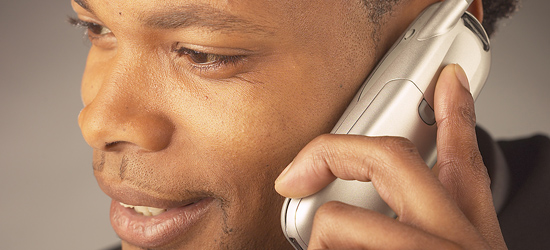Cell phones are playing an increasingly important part in most people’s lives. Here are 10 things to consider when you get ready to upgrade phones.
1. Connectivity
Does the phone connect well with your computer and other devices? Some phones have bluetooth and can keep your address book synchronized every time you come near your computer. Others require a USB connection. Some only have synchronization software that works with particular operating systems. Make sure you know that the device will connect with the things that are important to you before you buy it.
2. Email
People are using their phones for email more and more. Make sure you understand not only what the device is capable of, but also what type of data plan you will need to get it to work. The ideal setup is having full syncing for contacts, calendars and email over the wireless network. If this is set up right, you should be able to add a contact to your desktop computer and pull it up on your phone within a few minutes without needing to do anything else.
3. Battery Life
My Blackberry will last two or three days on a single charge. Many phones will only last 12 to 18 hours. Make sure you get a phone that has battery life that is compatible with your usage patterns. A phone is only useful if it has power, and if you may only have a chance to charge it every other day, make sure you get a phone that isn’t going to be constantly going dead on you.
4. Network and Bands
Different areas use different types of cellular technology that aren’t always compatible. For example, it used to be very difficult to get GSM coverage in rural America. This has gotten a lot better over the last few years, but it is still a big issue if you travel internationally. There are many areas where CDMA just won’t work. Some phones are designed to work on many different systems (more on this later).
5. International Usage
If you plan to use a phone internationally, make sure you understand where it will work, where it won’t and what types of plans are available. If you do extensive traveling, it might be cost effective to get a SIM card at your destination. Make sure your phone supports using a SIM card from a different cell phone company. Some of the international phones will let you add a SIM card (GSM technology) even though they are sold from a CDMA carrier in the US.
Be sure you understand how the data plans work internationally. I’ve heard many horror stories about people coming back with thousands of dollars in cell phone charges because they checked their email overseas. In my experience, Blackberry is one of the few phones where you can get a flat rate on international data usage.
6. Keyboard
If you plan to use your phone for responding to email or typing SMS messages, make sure they keyboard is easy to use. I’ve tried a number of different keyboards and have given up on using anything other than a full QWERTY layout. I know there are people who can type 40 WPM using a regular numeric pad, so you may be fine with a different type of keyboard. Just make sure the keyboard supports the way you want to use your phone.
7. Airplane Mode
If you spend a lot of time in a plane, it might be worth getting a phone that you can use with the wireless turned off. This is useful on planes so you can answer emails, play games, look up contacts, etc. in an “offline” mode.
8. Software
It is worth considering the software that is available for your phone. The iPhone has a very extensive app store with all kinds of different programs. Blackberry has recently released an app store as well. It may be worth browsing some of the offerings before deciding on a phone so you’ll have an idea of what third party programs might be useful to you.
9. Standard Charger
It is much easier to keep your phone charged if it uses the same charger as some of your other devices. The standard seems to be converging on a USB connection. However, some phones use a standard USB connection, but will only work with specific brand chargers. The Razr V3 is like this. If you try to charge it from a standard USB cable, it won’t work. (There is some software for the Mac that works around this, but it is still a pain.)
10. Additional Memory
If you may want to expand the memory on your phone, make sure you know what it is capable of. For example, just because a 4 GB card will fit in your phone, doesn’t mean that the phone’s operating system is capable of utilizing all that space.

I used to have a phone where the battery died in the middle of a phone call – so annoying.
Great summary of tips – really useful.
Something I would like to recommend people who to ‘scenario test’ the upgrade where possible.
I have had countless times where I was ‘upgrading’ a handset only to find it did not have the one tool I perhaps find the most valuable – a voice note/ memo recorder which saves directly to expandable memory.
Mobile phones are made for volume sales but its a good idea to test out its usage your way.
Other small things I look out for:
Ease of swapping memory (does cover need taking out)
What hands-free gear is available
How clear is the caller when they are on speakerphone